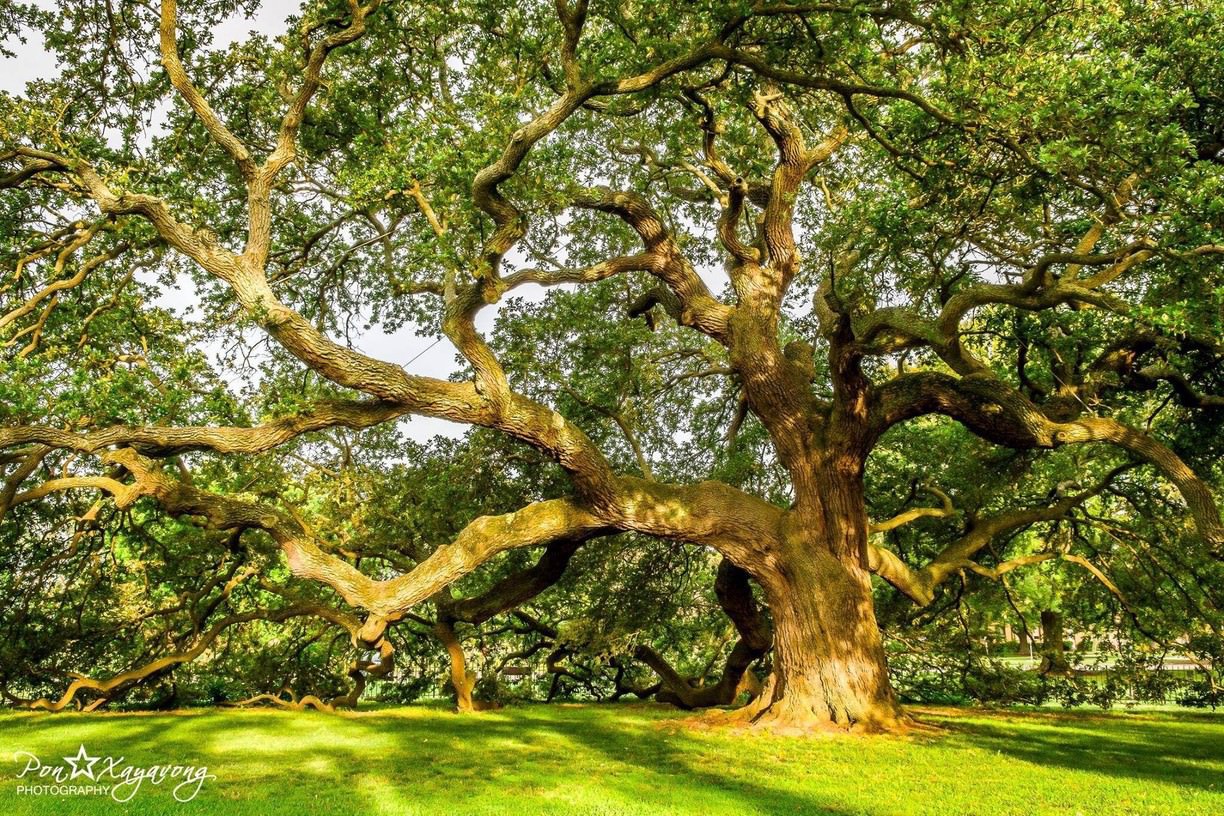
In the summer of 1999, I walked onto the campus of Hampton University as a freshman. As I strolled “the yard,” I was struck by the beautiful range of Blackness before me. As a Black girl, who went to systemically white primary and secondary schools, my imagination ran wild. I could finally see myself and be seen! While walking with my head spinning, I saw it. A magnificent tree that represented the dreams of my ancestors.
It was The Emancipation Oak.
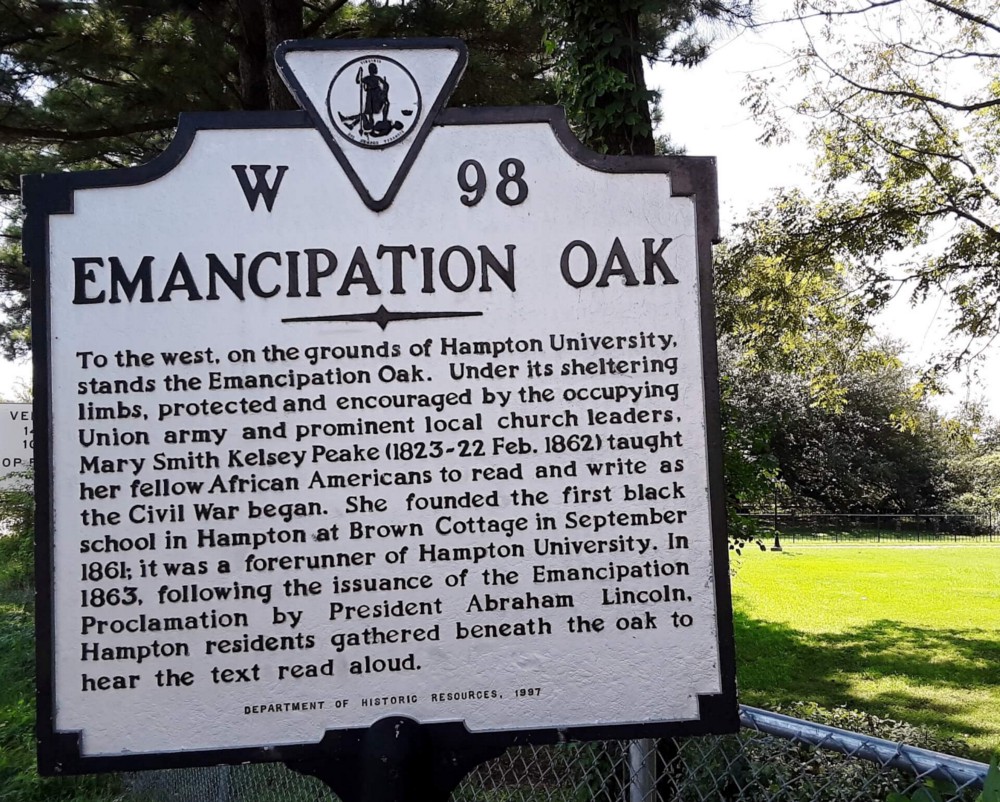
The Emancipation Oak was the place where enslaved Africans traveled to hear the first Southern reading of the Emancipation Proclamation in 1863.
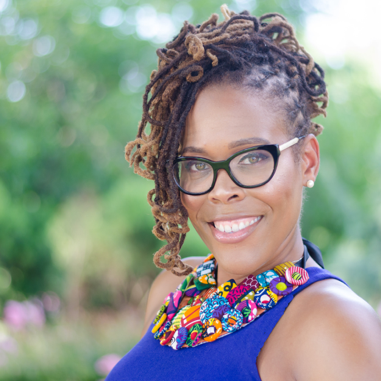
Erin Trent Johnson is the CEO, principal coach, and founder of Community Equity Partners (CEP) a coaching and leadership development firm that helps leaders and organizations in the education, non-profit, government, finance, legal, and tech sectors committed to creating equitable practices and culture. Erin also serves as the Senior Advisor for The Equity Lab.
At her core, Erin is committed to justice for communities of color and supporting the leaders and communities to achieve their vision of liberation.
Today is Juneteenth, a day when we celebrate the freedom of the last enslaved Africans to be released from dehumanizing capitalist bondage. It is a day of remembrance for those who were told to wait. For those whose bodies provided free labor through terror for two years after Lincoln signed the Emancipation Proclamation.
At the time, the Emancipation Proclamation was a statement evoking great joy and caution for Black people. Southern confederate states did not heed this statement, this declaration of freedom, until Texas finally announced this liberation decree when the last stand of the confederacy finally succumbed to the forces of union soldiers in 1865.
On this day, June 19, 2020, I want to share an offering of love to all of the leaders seeking to do the work of liberation behind the statements of commitment to Black lives and freedom.
But first, a story.
On July 7, 2016, I sat at my desk, frozen. It was my last day at a job that I was leaving to start my own racial equity consulting practice. My box was packed. My desk clear, except for the teardrops that escaped from my hands as I cradled my face trying not to be seen. I peered out from my hand shield and I looked around the vast open office to see similar looks of despair amongst the Black people. There were not a lot of us, but there were enough for me to see that I was not the only one girding myself, holding in the tears, and just trying to survive the day.
We were not crying because I was leaving. We were crying because we were devastated by the horror movie streaming live on Facebook. A video that will be etched in our souls forever. It was the video of Philando Castile, a Black man in Minnesota, being killed by a police officer in front of his girlfriend and her small daughter in the backseat of the car. This was not a movie. This was real life for all to see. This wasn’t Black news. This was The news of the day.
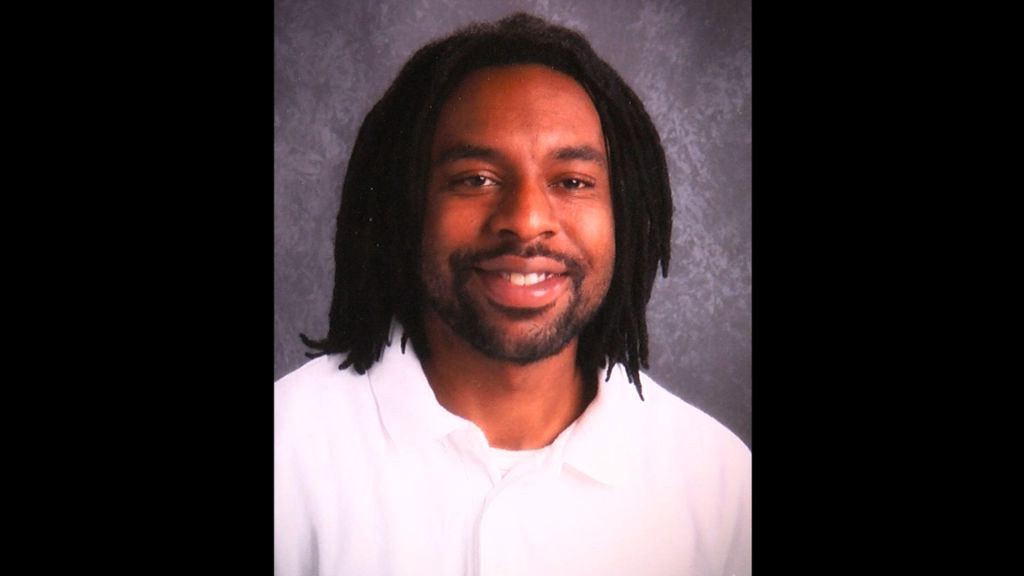
Philando Castille, CBS Minnesota
My heart burned inside for the woman who had one weapon of protection — her phone. I watched her film this horrific scene as a live S.O.S. She captured the evidence like a disembodied reporter. Her man was dying right in front of her. She knew it. Her ancestors knew it. So, she used what she had to prepare for what was to come. People would later critique her reaction as cold. They would say, “she was so calm.” I knew she wasn’t calm. She was in shock. Her trauma response was to leave her body to keep surviving and protect her family.
The baby girl in the back was crying. She was a witness to murder. This Black baby girl will hold this moment in her body for generations without proper healing. To see the baby girl was to see the future and the past of Black America converge. Bodies of people who sat in the back. Bodies of people who sat in the back and witnessed violence done to our families. Bodies of people who sat in the back and watched without the full comprehension of why our bodies could be so broken, so worthless in America.
I was crying for her. I was crying for me. I was crying for us. I was crying for all of the bodies who could not cry because it was not safe. I was crying for the thousands of Black bodies that had been lynched in public for all to see, and for the Black children and family members who were made to watch and threatened if they flinched. I was crying because that threat still lives in our bodies today. I was crying for the Black bodies sitting around the office holding in the pain, trying to keep working, to keep surviving to feed and protect our families.
Suddenly, I remembered there were white people in the office. They were busying themselves typing, laughing and chatting about the weekend. They were huddled in a corner talking about testing strategy. Yet, I didn’t notice any pain or sadness in their eyes. Maybe they were really good at hiding it, I told myself. I knew that wasn’t true. Maybe they hadn’t heard the news. Yet, it was on NPR that morning. How did they not know? I couldn’t fathom the possibility they did not care. We worked in education and the vast majority of the children being taught were Black. How could they not care?
They were human. I had seen expressions of humor, and compassion, and joy with many of these people. So, I know they had feelings and the ability to express them. Yet, there was a coldness. They were unaffected. Labor would continue. Production would continue. The urgent business of strategy would continue.
I was still crying. I was crying because I had been crying for two days before after seeing Alton Sterling killed by the police. This was a bloody week for Black people in the hands of the police.
That week started with American Independence Day — the fourth of July. A holiday celebrating white America’s independence from British rule. I qualify white independence because Black people were not free at the signing of the declaration of Independence. That week there would be no celebration for Black people.
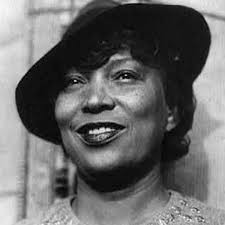
“If you are silent about your pain, they’ll kill you and say you enjoyed it.”
Zora Neale Hurston
I wondered if they couldn’t feel our pain, or see our tears, were we also bodies being exploited for our labor? Our pain should come at a cost, but it never has because there has never been an acknowledgement of the truth without some form of retaliation on Black bodies.
Without the acknowledgement of the truth, white bodies have never had to feel our pain or and can’t even touch their own pain. Their ancestors exchanged that human right for supremacy amongst all other bodies. It was all too much. I left. I was finished surviving and pretending in silence.
"The opposite of love is not hate, it's indifference."
Elie Wiesel
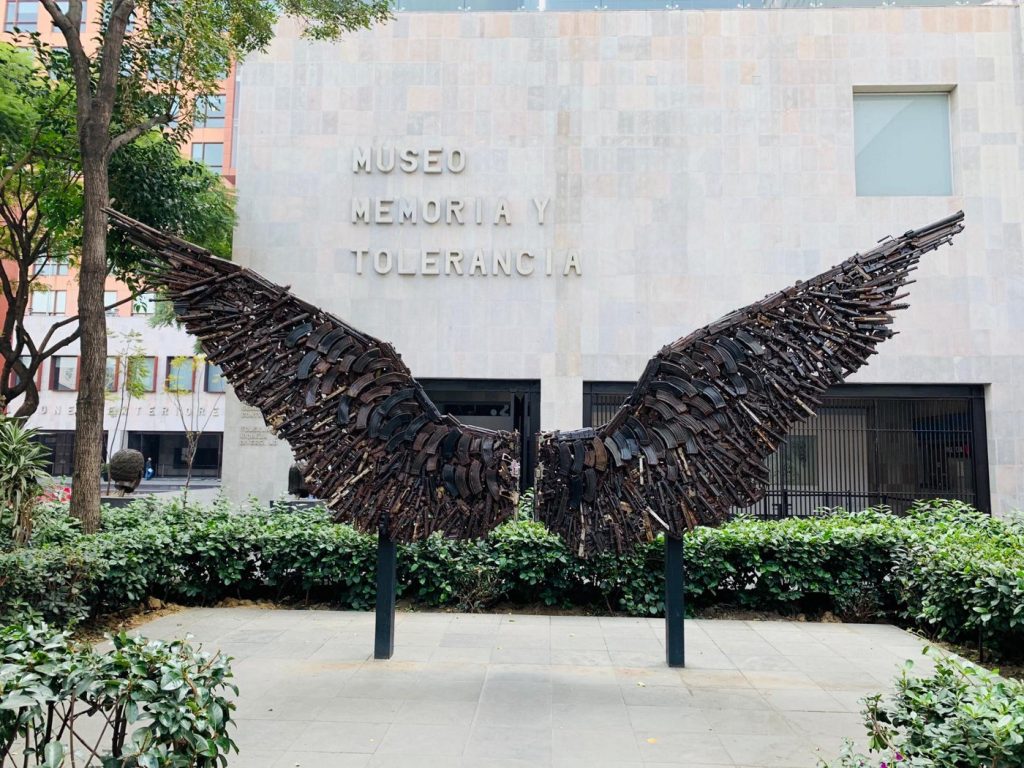
In December 2019, I traveled to Mexico City and visited the Museum and Memorial of Tolerance. This museum highlights nine genocides around the world including the Holocaust. One of the most salient messages I took away was how indifference was the catalytic state that allowed mass genocide to be possible.
In his speech “The Perils of Indifference,” Holocaust survivor, Elie Wiesel told the story of how Germans and the U.S. closed their eyes to the horrors of the Holocaust. He said, “indifference is tempting and seductive. It is so much easier to look away.” He goes on to say, “indifference is worse than anger and hatred. It is a product of lost humanity.”
Indifference is legacy trauma of domination and enslavement for white people. It is not just the inability to see, it is the inability to feel, to dream, and to access empathy and love. Dr. Leticia Nieto, author of Beyond Inclusion, Beyond Empowerment: A Developmental Strategy to Liberate Everyone, says “indifference is the most pervasive set of skills in a system of oppression that requires no energy.”
Indifference goes beyond the state of sleeping. For racism, indifference is the complete disconnection from whatever does not center whiteness. It is closed eyes, closed mouths, and closed hearts.
Therefore, Love is in Need of Love Today.
"Our human compassion binds us one to the other — not in pity or patronizingly, but as human beings who have learnt how to turn our common suffering into hope for the future."
Nelson Mandela
Here is an offering of love for our collective liberation on Juneteenth our Black Independence Day.
Pause, Restore, and Repair
Release the attachment to urgency and a perfect outcome in this moment. This is a time for rest, restoration and repair. Remember our history so we can re-member our bodies.
After the Civil War came Reconstruction, a period of freedom and power for Black people. This time of wealth building and empowerment for Black people was met with decades of the retaliation of Jim Crow laws and violence.
Pause for a brief period of repair and rest as individuals and institutions. Resist the temptation to jump right into training and programming during this time. Don’t feel the pull to just “do something” or to do it “the right way.”
Before you seek out a training or workshop, you must spend time coming home to your body, studying racialized patterns, and developing a racial justice orientation. Recognize the need for restorative action that is honest about the harm done to Black people and actively work to make repair.
Center Love and Liberation
Black people, we can engage in racial justice and healing when we center love, leadership and freedom for Black bodies. When Black people are free, we will all be free of dominator culture that steals all of our humanity. Centering ourselves in love will allow us to know the value of our Blackness is immeasurable. We will be able to dream beyond the walls of domination that shrinks creativity. We will build organizations, communities, and relationships centered in love and justice.
"Love does not begin and end the way we seem to think it does. Love is a battle; love is a war; love is a growing up."
James Baldwin
The white indifference that has allowed for violence done to Black bodies and hearts can be disrupted through loving truth and practice with white people. For white people, radical love and embodied practice can open deep connection to the humanity that was closed when their ancestors traded it for supremacy. Love can allow white people to withstand the discomfort of knowing the truth of anti-blackness and their own racism. This discomfort is capable of pushing white people to a place beyond just waking up, but to a place where it is possible to engage in the sustainable practice of centering Black lives and leadership.
Re-member Your Body.
Get into your body to — FEEL. For Black people and people of color, we must have safe spaces without the white gaze to get into our bodies and heal the generational wounds of racialized trauma. We need spaces to just be! We need spaces for Black joy and celebration. We deserve this space. We are owed this space.
For white people, recognize the cost of indifference and be uncomfortable. Stay uncomfortable. Racism lives in our bodies. It creates separation from our bodies through mental and spiritual dissociation.
 Resmaa Menakem, author of My Grandmother’s Hands: Racialized Trauma and the Pathway to Mending our Hearts and Bodies says, “For the past three decades, we’ve tried earnestly to address white-body supremacy in America with reason, principles, and ideas — using dialogue, forums, discussion, education and mental training. But the widespread destruction of Black bodies continues… We’ve focused our efforts in the wrong direction. We’ve tried to teach our brains to think better about race. But white-body supremacy doesn’t live in our thinking brains. It lives and breathes in our bodies.”
Resmaa Menakem, author of My Grandmother’s Hands: Racialized Trauma and the Pathway to Mending our Hearts and Bodies says, “For the past three decades, we’ve tried earnestly to address white-body supremacy in America with reason, principles, and ideas — using dialogue, forums, discussion, education and mental training. But the widespread destruction of Black bodies continues… We’ve focused our efforts in the wrong direction. We’ve tried to teach our brains to think better about race. But white-body supremacy doesn’t live in our thinking brains. It lives and breathes in our bodies.”
Being in your body allows you to Tell the Truth without shaming the devil. Embrace the shame you feel. Do not retaliate in overt or covert ways. Sit with the defensiveness. Focus on healing; telling and receiving the truth without shame and defensiveness taking over. Receive it. Do not leave the conversation because it is uncomfortable. Only leave if your body is not safe. Black people’s bodies are almost never safe when white people are uncomfortable and think they are not safe.
Do not leave your body.
Defensiveness is a common reaction when waking up to the realities that racism is operating on your watch or even within you. Consider how you and/or your organization or corporation has exploited, made decisions for, or harmed Black people and communities. Do not leave your body.
Defensiveness leads to retaliation and/or inaction.
Remember the patterns of retaliation in horrific destruction of Black freedom and wealth in Tulsa, Oklahoma in 1921.
Remember the patterns of indifference in Germany, Rwanada, and for Philando Castille, Alton Sterling, Sandra Bland, Trayvon Martin, Ahmaud Arbery, Breonna Taylor, and George Floyd.
Remember that statements of commitment to Black freedom, justice, leadership, and liberation often evoke both joy and caution.
Envision a culture of love and liberation.
You will not create this culture with checklists, book clubs, task forces, making strategies that result inadequate results created by immediate and ill-informed reactions. White supremacy is a disease not a problem to be solved. It requires an abolitionist mindset that can envision ways of being we’ve never tried before. Release attachment to a specific outcome and perfection. There are problematic ways of being, but there is NO one right way.
Envision a culture that centers the leadership, vision, and healing of the most marginalized. Recognize the old paradigm does not exist anymore. Invite people to imagine that you will be trying new ways of being that uplift and honor love, the truth, and justice.
This is also an invitation to step aside if you are not capable of centering Black leadership, the wisdom of the most marginalized, love and liberation. This is for the truly radical leaders who recognize they are not equipped to lead in the moment. Stepping aside, giving up control, and elevating the type of courageous leadership that organizations are seeking is a revolutionary act. Bonus points if these leaders are Black womxn.
"love and justice are not two. without inner change, there can be no outer change; without collective change, no change matters."
Rev. angel Kyoto williams, Sensei
Make a commitment to Practice.
Practice, Practice, Fail, Repair, Practice, Keep Going.
Resist the temptation to seek quick fixes for systemic oppression. Book clubs and conversations about race are nice. However, before you engage in that work cross-racially, stop to recognize the need for our individual then collective healing and restoration. You cannot make transformational change that will heal and center Black lives through a one day training, listening sessions, task forces, and one hour talks.
Make a commitment to deeply transformational anti-racist practice. Practice do not perform anti-racism. Focus on the inner work of your personal liberation from white body-supremacy before engaging in external work. Then be in loving conscious community that will challenge and nurture you into your true self outside of anti-blackness and white supremacy. This will take a lifetime investment in our collective healing, but as Resmaa Menakem says, you can start with a three year practice.
If you need a soundtrack for your practice, remember these words by Stevie Wonder.
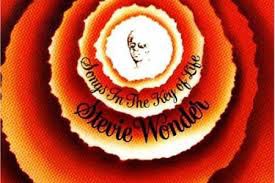
Songs in the Key of Life, Rolling Stone